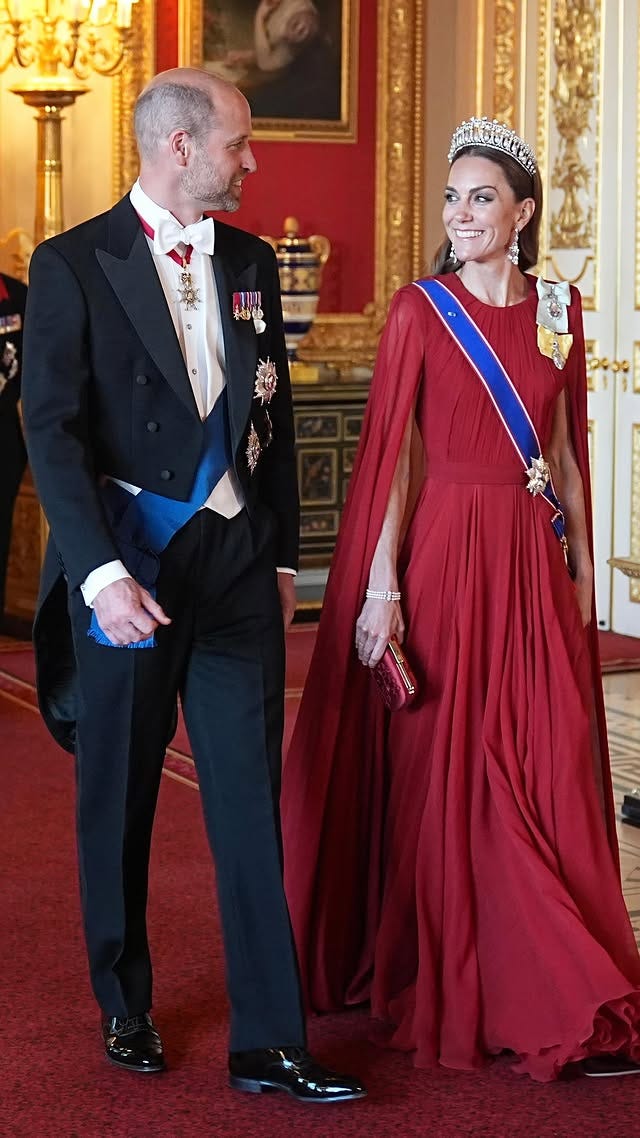What an unprecedented bounty of photos means for the monarchy
A state dinner highlights the change from Elizabeth's reign to that of Charles
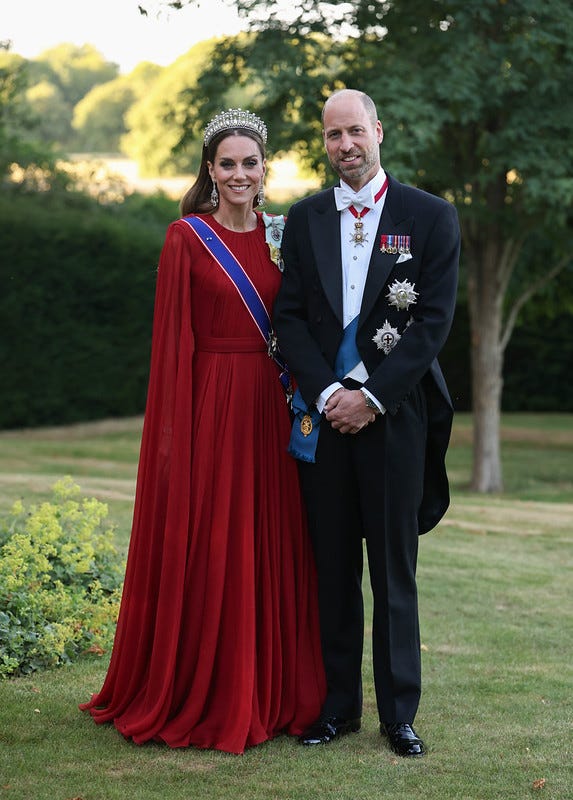
I was on a short break when French President Emmanuel Macron and his wife Brigitte, visited Windsor Castle for a state visit. As I watched photos and videos from that day stream across my phone, the bounty of high-resolution videos and photographs made me realize that a seismic shift had occurred since the reign of Elizabeth II.
It’s not that the actual elements of a state visit had changed that much — they haven’t, though there’s more of an emphasis on their visual appeal — but rather that we can now see parts of the event that were once off limits. William and Kate even released an image of them in formal evening wear, which was taken on a lawn, before they went to Windsor Castle for the evening’s events. Then, we also got another bonus: visuals of a procession of royal couples on their way to the pre-dinner reception inside the castle.
Less than a decade ago, royal watchers struggled to get images of those who attended a state dinner. The change can best be seen when comparing state dinners eight years apart — the 2017 state dinner for King Felipe and Queen Letizia of Spain and the one from this week. During the reign of Elizabeth II, there was a basic formula for how state dinners were covered by the media: the principals would pose for images, there may be video of the royal procession into dinner, and then, photographers would take a few more snaps of the two heads of state during the dinner itself.
The procession video would be from a fixed camera position meaning that the operator (often from the Press Association) had to prioritize which royals to shoot, and would often focus on the most senior royals, giving short shrift to everyone else. It was the bare minimum for such an important event in the royal calendar.
The paucity of images meant that the only clear photos of “secondary royals” were often those snapped through car windows as the royals entered Buckingham Palace, leaving us no options but to peer into the background of the published images to make educated guesses about the other royals. Was that the Duchess of Gloucester standing behind Elizabeth II? Is Kate wearing a new dress or is it a reworked version of a previous one? Why does the shape of Sophie’s tiara look different in video screengrabs?
For that 2017 state dinner, there are so few clear images of Kate, then-Duchess of Cambridge wearing the monarch’s Greville ruby-and-diamond bandeau necklace that even the Cambridges’ own communications team used what look like screengrabs or low-resolution images, including one of Kate at dinner, partially hidden by one of the huge floral centrepieces on the table. (Here’s an exhaustive post by the What Kate Wore website).
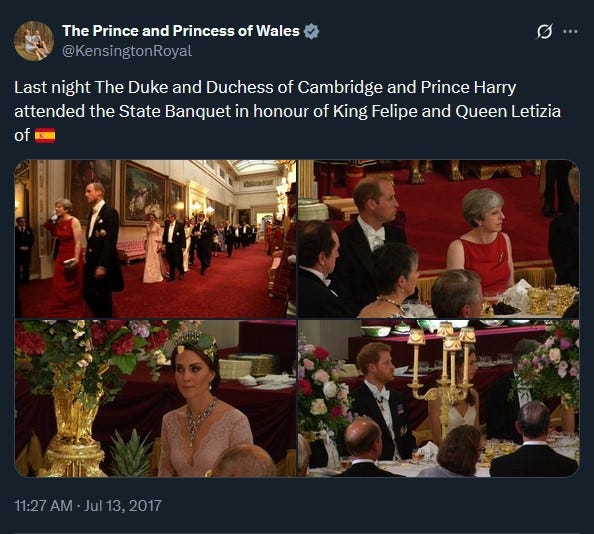
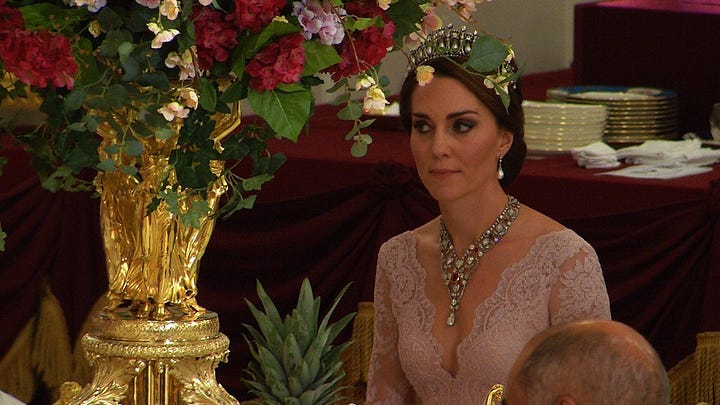
To be sure I was correctly remembering the dearth of such images, I compared the results of a search of Getty Images for the state dinner by the Spanish king and queen in 2017 with that of this week’s state dinner, using the same search parameters — “state dinner spain 2017” and “state dinner france 2025.”
I used Getty because I know that it includes “pool” images taken by photographers of other agencies [which are shared among all news organizations], including those from 2017 by Dominic Lipinski of AFP.
There’s just no comparison between how the two state dinners are shown. There are fewer than 20 images of the 2017 state dinner, including multiple images of the two regal couples and wide-angle shots of the dining area. (Because I didn’t limit either search by date or to only United Kingdom, the images include some from the state dinner in Japan and other events).
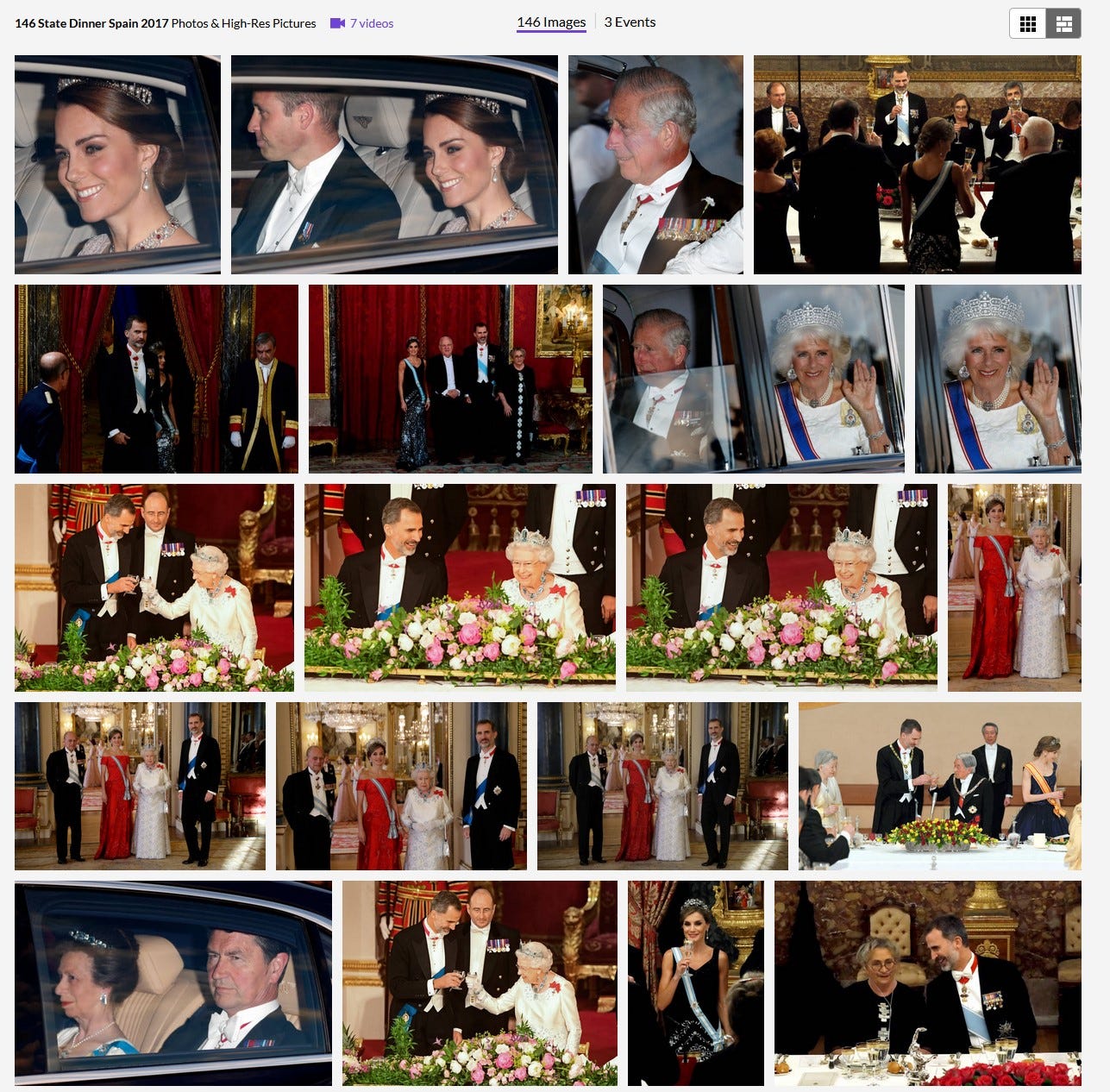
In contrast, there are scores upon scores of detailed images for this week’s state dinner at Windsor Castle, including:
Royal couples arriving for the evening’s events
Formal images of the King and Queen with Emmanuel and Brigitte Macron
The royal procession into dinner (including pool images, such as those taken by the Press Association’s chief royal photographer, Aaron Chown)
Multiple angles and images of the dinner itself, including the speeches by the King and President Macron, as well as the toast (with photographers capturing not only Macron clinking glasses with the King as well as the Princess of Wales)
Detailed images of guests, including Elton John and Mick Jagger

There are so many images that it took me a while to realize that we had visuals of two procession that evening. There’s the usual royal procession of the British and French delegations walking into St. George’s Hall for dinner. And before that is the other procession of royal couples as they walk to the pre-dinner reception with their guests, including the French delegation, which allowed the media to capture rare full-length images of formally attired royal husbands and wives.
Those photographic opportunities are supplemented by extensive video coverage, which is everywhere, including on all major U.K. networks as well as on YouTube.
Two years ago, I wrote about a growing trend of royals using slickly edited videos to showcase their activities. That was in regard to a nearly five-minute video put out by the Prince and Princess of Wales for the coronation in 2023. Such videos are now so common that it’s rare when one isn’t released after a major event. For this state visit, there are also multiple videos created by the royal communications staff of Kensington Palace (see above) and Buckingham Palace (the pre-dinner inspection by the King and Queen as well the official photo and the King’s speech).
That slow, careful change has a moniker: the “Marmite theory of monarchy,” named by Robin Janvrin, one of the Queen’s former private secretaries. As I explained in 2020, “while the red, yellow and green label on the jar of quintessentially British food spread looks like it has never changed, its design has been incrementally tweaked over the decades. In the same way, the monarchy of today looks nothing like it did a half-century ago because of many, almost imperceptible change. … The monarchy, like that Marmite label, is destined to adapt.”
It takes an event like the French state visit to realize just how dramatically things have changed in the last decade as we shift from the old norms of the reign of Elizabeth II to those of Charles III.
In addition to the new media access to the state visits, the communications staff also sent detailed briefing notes to journalists on its main media list. In previous years, that information was only given to a select group of U.K. reporters.
The changes may not look like much when analyzed on their own, but they add up.
My latest Royal Roundup on Global TV’s The Morning Show on July 7, 2025:




